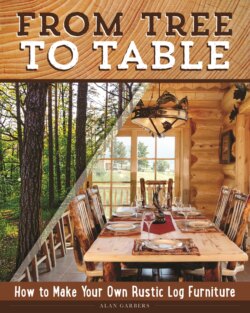Читать книгу From Tree to Table - Alan Garbers - Страница 14
На сайте Литреса книга снята с продажи.
The Art of Coppicing
ОглавлениеHere’s one more thing to think about. Many hardwoods start new growth once the tree is cut down. This new growth spurts up fast because it has a mature root system supporting it. Tulip poplar, maple, ash, oak, willow, alder, and sassafras often send up a dozen or more new shoots off a cut stump. It doesn’t take long before you have a new crop of sapling wood to use.
While this may be a shock to folks in the U.S., it’s an ancient practice in Europe called coppicing. The practice is a fast way to grow fence material, roof thatching, firewood, and, for us, furniture material.
Generally speaking, it is best to cut the tree in the dormant stage of winter. Cut the tree close to the ground and then let nature do its thing. By the next fall, there can be suckers with five feet (1.5 m) of new growth.
Man isn’t the only one that makes use of coppiced trees. Deer love the new tender shoots as they grow, especially those of sassafras trees. I’ve seen browsing on new growth that was caused by deer that looked like a madman with a machete had been at work on it.
This tulip poplar was cut ten years ago. Since then a number of new saplings have sprung up, all the perfect size for furniture.
This stump was cut a year before. It won’t take long before these suckers are ready to use for projects.
